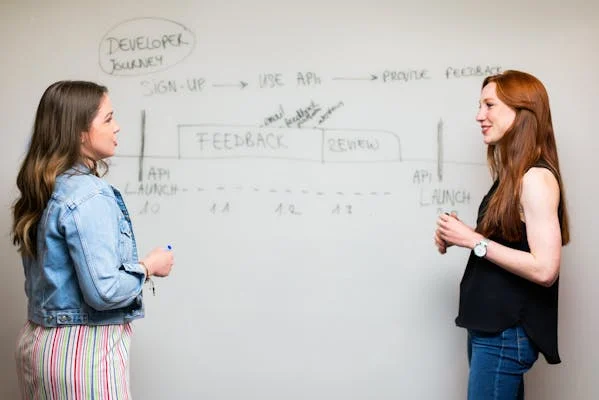The education landscape is constantly evolving, and institutions are increasingly turning to digital solutions to keep up with growing demands. Whether it’s the pursuit of innovative technology, enhanced infrastructure, or specialized services, the Request for Proposal (RFP) process has become a vital part of the puzzle. These structured documents allow educational institutions to identify and secure ideal partners for their needs, but where do you begin if you’re looking to either issue an RFP or respond to one?
This is where RFP websites for the education sector step in, acting as a central hub for connecting schools, universities, and private vendors. Today, we’ll explore the importance of these platforms, their benefits to educational institutions and vendors, and how to make the most of them.
What Are RFP Websites for the Education Sector?
Put simply, these websites operate as digital marketplaces where educational institutions can list their project requirements and vendors can submit proposals to meet these needs. Think of them as the meeting point where schools and service providers can efficiently communicate and collaborate.
Educational institutions use RFP websites to find solutions for challenges such as upgrading IT infrastructure, designing engaging eLearning platforms, building new academic facilities, or outsourcing specialized services like student counseling or food supply. On the other side, vendors use these platforms to identify potential business opportunities and showcase their expertise.
Why Are RFP Websites Critical for Education?
The education sector is unique in its requirements. It deals with diverse stakeholders—students, parents, teachers, and administrators—and often operates with constrained budgets. Here’s why RFP websites tailored to education are essential:
- Streamlined Processes
Providing a clear and structured way to connect institutions with vendors saves hours of manual outreach and administration.
- Targeted Opportunities
Education-specific platforms are built with a focus on the challenges and solutions unique to the sector.
- Enhanced Transparency
RFP websites outline requirements, timelines, and evaluation criteria upfront, ensuring fairness and clarity in vendor selection.
- Cost Efficiency
Schools and educational institutions can discover cost-effective solutions without sacrificing quality.
Key Benefits of Using RFP Websites for the Education Sector
1. Access to Specialized Vendors
With RFP websites, educational institutions can attract vendors that specialize in their specific needs, whether it’s K-12 eLearning platforms, university housing solutions, or STEM lab equipment. This ensures a better match for institutional goals.
2. Simplified Vendor Analysis
Platforms often standardize how proposals are submitted, making it easier for institutions to compare vendors based on criteria such as pricing, experience, and service range.
3. Improved Opportunities for Vendors
For third-party service providers, RFP websites offer a larger, more accessible market. Vendors no longer need to rely on word-of-mouth or cold calling to connect with interested clients.
4. Enhanced Collaboration
These platforms foster collaboration between institutions and vendors by offering chat tools, document upload features, and real-time updates.
5. Cost and Time Savings
By leveraging digital tools and templates, RFP websites eliminate outdated, manual processes, helping educational organizations and vendors focus on what truly matters—providing quality education and services.
Top RFP Websites for the Education Sector
Finding the right RFP platform can make or break your project’s success. Here’s a list of prominent RFP websites for the education sector to get you started:
1. GovWin by Deltek
A comprehensive platform that lists RFPs related to government-funded educational projects. GovWin makes it easy for institutions to find vendors for large-scale projects such as infrastructure improvements or software procurement.
2. BidNet
Often used by educational institutions in the public sector, BidNet is well-known for aggregating government and municipal RFP opportunities. Their user-friendly interface makes it simple to locate and respond to bids.
3. E&I Cooperative Services
Focused specifically on education, this platform emphasizes collaborative and cost-effective solutions. Vendors benefit from access to targeted RFPs sourced from schools and higher education institutions.
4. Periscope Holdings
One of the largest platforms for public procurement, Periscope helps education leaders discover a wide variety of local and national vendors.
5. Onvia by Deltek
Designed for vendors competing for public sector contracts, Onvia connects educational organizations with a curated pool of vendors known for their innovative solutions.
How to Leverage RFP Websites Effectively
Whether you’re an educational institution or a vendor, using RFP platforms to your advantage requires a strategic approach. Here’s how you can make the most of them:
For Educational Institutions:
1. Be Clear About Your Needs
Structure your RFP in a way that clearly outlines your goals, timelines, and budget. The more transparent you are, the better your chances of attracting suitable vendors.
2. Use Detailed Evaluation Criteria
Define key metrics for evaluating vendor proposals. Consider factors like experience, case studies, costs, and client reviews.
3. Keep Communication Open
Many vendors will have additional questions about your project. Use the tools provided by RFP platforms—such as Q&A forums or chat systems—to provide quick and consistent responses.
4. Prioritize Scalability
Choose vendors that offer scalable solutions, particularly technology providers, as the education sector increasingly shifts to digital.
For Vendors:
1. Tailor Your Proposals
Generic proposals won’t cut it. Carefully read the RFP and customize your response to demonstrate how you meet the institution’s specific needs.
2. Highlight Your Expertise
Showcase real results from similar clients in the education sector. Include testimonials, case studies, and clear metrics like ROI or efficiency improvements.
3. Price Competitively
Educational institutions often work within tight budgets. Think outside the box to offer value-add services where possible.
4. Stay Ahead of Deadlines
Nothing diminishes your credibility faster than missing a submission deadline. Use RFP websites’ notification tools to stay on top of application schedules.
Trends Shaping RFP Websites in the Education Sector
The rapid adoption of technology has influenced how RFP websites operate. Here are a few trends to watch out for:
- AI-Driven Matching: Some platforms are incorporating AI to match educational institutions with suitable vendors based on keywords, past projects, and feedback scores.
- Sustainability Requirements: With more schools adopting eco-friendly practices, expect RFPs to emphasize sustainability metrics in vendor evaluations.
- Blockchain Transparency: Some leading-edge platforms are exploring blockchain to enhance transparency and provide tamper-proof records of the RFP process.
Take the Next Step in the RFP Process
RFP websites are a game-changer for the education sector. They streamline procurement processes cut costs, and foster collaboration all while ensuring the best possible solutions for schools and institutions. Whether you’re a school administrator looking for top-tier vendors or a service provider hoping to showcase your expertise, mastering the use of RFP platforms can unlock untold opportunities.





